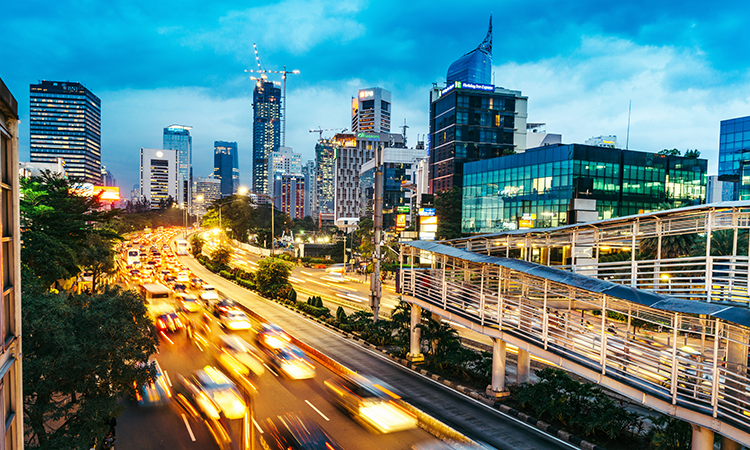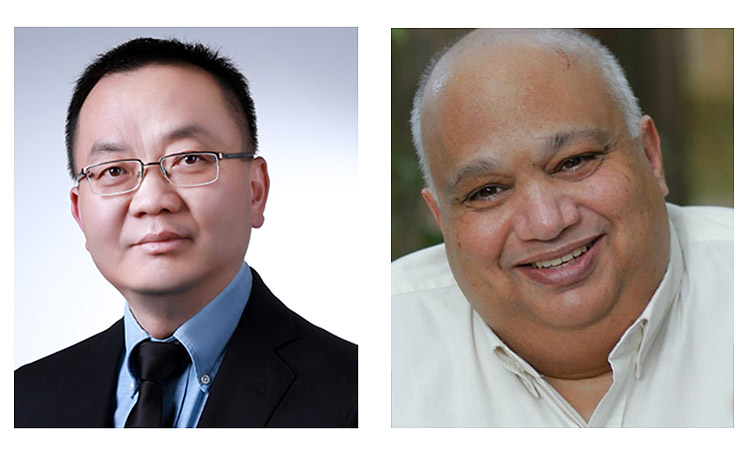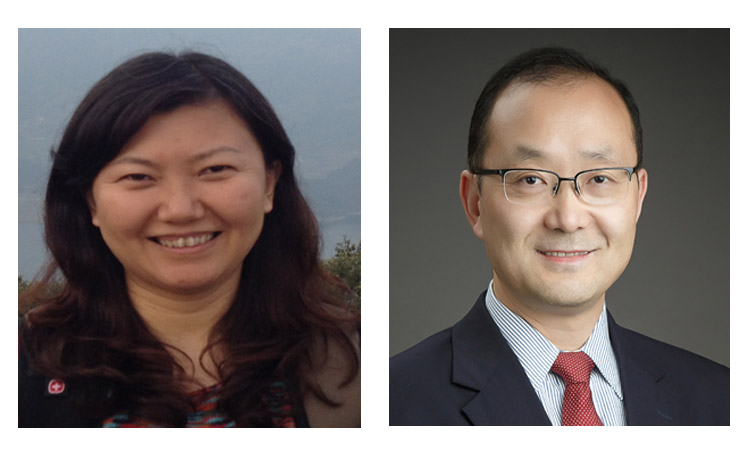The Rise of Biopharmaceutical Manufacturing in Asia

Biopharmaceuticals are booming in Asia, buoyed by enhanced regulations, an influx of venture capital, a culture of innovation, and government support. Asian pharmaceutical manufacturing has traditionally focused on generics, but things are changing.1 ,2 In South Korea, biologics powerhouse Samsung BioLogics saw a 56% increase in drug sales in 2017.3 In China, the world's second-largest market, biopharmaceuticals are expected to grow at a rate of about 13% for the next few years, outpacing the projected 9.1% annual growth rate W for all pharmaceuticals.4
- 1Liu, A. "AstraZeneca Allies with Alibaba and Tencent as Its China Sales Soar." FiercePharma, 2 February 2018. https://www.fiercepharma.com/marketing/astrazeneca-reports-15-2017-chi- na-growth-allies-alibaba-and-tencent
- 2Sagonowsky, E. "China Pharma Poised for Explosive Growth, Novartis CEO Says." FiercePharma, 19 April 2017. https://www.fiercepharma.com/pharma/china-set-for-a-pharma-boom-period- novartis-ceo-says
- 3Keenan, J. "Samsung BioLogics Reports $420M in Sales in 2017, Helped by Production Boosts from New Plants." FiercePharma, 6 February 2018. https://www.fiercepharma.com/manufac- turing/samsung-biologics-reports-420m-sales-helped-by-production-boosts-from-two-plants
- 4GE Healthcare. "Clover Biopharmaceuticals Selects GE's FlexFactory Biomanufacturing Plat- form for Its New Production Facility in China." Press release. 22 January 2018. https://www. genewsroom.com/press-releases/clover-biopharmaceuticals-selects-ge's-flexfactory-bio- manufacturing-platform-its-new
With the global biologics market projected to reach $390 billion by 20205 and drugs worth an estimated $64 billion coming off patent by 2020, opportunities for biosimilars are exceptional. Asia leads the way globally, with more than 300 candidates under investigation.6 South Korea’s Celltrion Group has produced Herzuma, a trastuzumab biosimilar that earned European Medicines Agency (EMA) approval in February 2018; the company is also studying CT-P13, an infliximab antibody that shows promising results in the treatment of Crohn’s disease.7
Samsung Bioepsis, a partnership between Samsung Biologics and Biogen in South Korea, received EMA approval for two biosimilars in 2016: Benepali (etanercept) and Flixabi (infliximab). In December 2017 the company also brought a $750-million biologics facility online in Incheon, South Korea. With twelve 15,000-liter (L) bioreactors that can produce 4,500 kilograms of biologics per year8 and manufacturing contracts that total over $3 billion, the new plant makes Samsung the world’s largest biologics contract manufacturing organization (CMO).9
In India, Biocon received US Food and Drug Administration (FDA) approval in 2017 for Ogivri, a biosimilar to Herceptin (trastuzumab) that is the first biosimilar approved in the US for the treatment of breast and stomach cancer and the second biosimilar approved in the country for cancer treatment.10
Regulatory Reforms
While Japan and South Korea have regulatory regimes with guidelines for biosimilars as stringent as those of the EMA, recent changes to the China Food and Drug Administration (CFDA) regulations and enforcement have boosted domestic and international companies working in China.
“Along with a lot of new investment, this is the main factor responsible for the boom in biopharmaceuticals in China,” said Charles Tong, Senior Vice President, Drug Research and Development at Suzhou Ribo Life Science Co., Ltd., a biotechnology company in Kunshan City, Jiangsu Province, China. “This makes drug development more closely aligned to the regulatory pathway of the [US] FDA. It was time-consuming to introduce a new product into China, which was the reason that companies used to focus on the development of generics. Regulatory reform has helped create an environment in which biotech companies can engage in innovative drug development.”
Among the changes to CFDA policies are:
- Conditional marketing authorization for orphan drugs (similar to the EMA’s conditional marketing authorization and the FDA’s breakthrough therapy designation)
- Authorization to use foreign clinical trial data in a new drug application
- Approval for clinical trials reduced to 60 working days11
“The CFDA changes are favorable for drug development because they shorten the review time and make for more transparent dialogue with reviewers,” continued Tong. “There is more opportunity for drug development companies to engage reviewers and have less risk and increased confidence for development.”
Suzhou Ribo has benefited from these reforms. The company develops oligonucleotide drug candidates such as small interfering RNA* and antisense RNA† therapies for breast and liver cancers as well as hepatitis and HIV. In partnership with Ionis Pharma in San Diego, California,12 Ribo has China commercial rights for two Ionis antisense RNA drug candidates, with the option on a third. Six oligonucleotide products received FDA approval in 2017.13
“China has joined the ICH, and there is more harmonization with global regulatory standards,” said Cindy Shen, Senior Principal Technical Advisor at Shanghai Roche Pharmaceuticals. “The CFDA is now using the FDA’s model for clinical trials. This will result in more competition for domestic companies from multinationals in new drug development.”
* Abbreviated as siRNA, these are double-stranded RNA molecules 20–25 bases long, produced
by enzymatic cleavage, that regulate the expression of genes via RNA interference.
† Abbreviated as RNA, these are noncoding single-stranded RNA used to inactivate messenger
RNA synthesis and protein translation.
Chris Chen, CEO of WuXi Biologics, agrees. “The changes in the CFDA regulations are just getting started and add additional fuel on the fire that already began three to five years ago. They help the industry in many ways, making the whole process much faster. It used to take two years to get a program cleared for clinical trials, a process that takes 30 days in the US. Now they’ve cut that time down to three to six months, which is a huge boost for the industry.”
WuXi is involved with 127 different drug programs, which Chen claims is 10% of the global portfolio of medicines in development. The company’s first facility received an honorable mention as part of ISPE’s 2014 Facility of the Year Awards and was the first Chinese manufacturing plant to meet current good manufacturing practice (cGMP) standards in the US, Europe, and China.
Chen also applauds CFDA’s simplified regulations, which are closer to global standards and make it easier for Chinese companies focused on international markets. “Previously, if you had to get program approval from the FDA and the CFDA you had to do two sets of work,” he said. “Now that the standards are more closely harmonized, you can do both at once. Regulations are a lot closer, almost harmonized. They used to be like day and night; now it’s like midday.”
“Chinese companies are now able to develop products to the standard acceptable to both the CFDA and the FDA,” added Tong. “There are roughly the same standards for tech, data integrity, and compliance. In that regard, Chinese companies will have more competitive advantage and have capability to file to FDA with more acceptable data, giving them a greater chance to succeed.”
- 5IMS Institute for Healthcare Informatics. “Delivering on the Potential of Biosimilar Medicines.” March 2016. https://www.iqvia.com/-/media/iqvia/pdfs/institute-reports/delivering-on-the-po- tential-of-biosimilar-medicines.pdf?la=en&hash=7705453CF0E82EF41402A87A44744FBF- 8D84327C&_=1517258175757
- 6Momin, Z., et al. “Will Asia Go Big in Biosimilars Adoption and Manufacturing?” Biosimilar Development, 18 May 2017. https://www.biosimilardevelopment.com/doc/will-asia-go-big-in-bi- osimilars-adoption-and-manufacturing-0001"
- 7Chandrawat, S. “Asia’s Clout in Global Biosimilars.” Mirae Asset Lens, 4Q 2017. https://www. miraeasset.com/upload/insights/recent-insights/LENS_Issue_10_Asia%27s_Clout_in_Glob- al_Biosimilars_4Q2017.pdf
- 8Palmer, E. “Samsung Biologics Nears Finish Line with Massive Biologics Manufacturing Project.” FiercePharma, 11 April 2017. https://www.fiercepharma.com/manufacturing/samsung-nears-fin- ish-line-massive-biologics-manufacturing-project
- 9Sohn, Ji-Young. “Samsung BioLogic Completes 3rd Plant in Songdo.” Korea Herald, 15 December 2017. http://www.koreaherald.com/view.php?ud=20171201000727
- 10Trivedi, I. “US FDA Approves Mylan-Biocon’s Biosimilar for Cancer Drug Herceptin.” LiveMint (website), last published 2 December 2017. http://www.livemint.com/Industry/AdFKCQcZ-vRRXnToosfdMbO/US-FDA-approves-MylanBiocons-biosimilar-for-cancer-drug-He.htm
- 11Liu, A.“China’s Latest Western-Style FDA Tweak Puts Orphan Drug Approvals in the Fast Lane.” FiercePharma, 15 May 2017. https://www.fi ercepharma.com/pharma-asia/china-s-fda-adopts-us-style-speed-up-for-lifesaving-drug-approvals
- 12Taylor, P. “Ionis Looks East, Teaming Up with Ribo to Bring RNA Drugs to China.” FierceBiotech, 18 April 2017. https://www.fi ercebiotech.com/biotech/ionis-looks-east-teaming-up-ribo-to-bring-rna-drugs-to-china
- 13Stein, C. A., and D. Castanotto. “FDA-Approved Oligonucleotide Therapies in 2017.” Molecular Therapy 25, no. 5 (3 May 2017): 1,069–1,075.

Outsourcing in China
Another regulatory change permits pharmaceutical companies to outsource manufacturing to CMOs. While this is a common practice in other parts of the world, it is new in China. Easing this restriction relieves biotechnology companies from up-front infrastructure investment and allows them to focus on innovative product drug development.
This change allowed WuXi to open the world’s largest biologics manufacturing facility in December 2017.14 Its 30,000-L bioreactor capacity will provide contract services for both Chinese and international pharmaceutical companies. “WuXi Biologics is a good example of the strong CMO capability in China,” said Tong. “I see large pharmaceutical companies increasing their drug development activity by leveraging existing API (active pharmaceutical ingredient) development and manufacturing capacity in China.”
Tong’s company, Suzhou Ribo, collaborates with its partners through technology transfer of drug substance or drug product, then manufactures some APIs in-house. It also relies on CMOs for the manufacture of aseptic products and packaging.
Increased Support
“Another factor that has encouraged the industry to flourish in Asia is the unprecedented influx of private equity investment,” said Chen. “We’ve seen companies creating high valuations in as little as three to five years.”
Regional governments also encourage innovation. “This is a good time for biologics and biosimilars in China,” said Shen. “One of the reasons for this is that China’s health care costs are high, and the government would like to bring more affordable drugs to the public.
“They’ve made innovation almost mandatory, and if a company doesn’t innovate, you’ll be out,” said Chen. “This has been done through such CFDA reforms as the current rule that new drugs and biosimilars have to be differentiated from other products, which is similar to what happens in the US.”
South Korea supports its biosimilars industry with tax breaks and regulatory guidance; it also allocates a generous portion of its research budget to domestic pharmaceutical companies.6
The expansion of health care coverage in Asia is expected to provide better access to drugs in countries such as Thailand and Indonesia, which have universal health care.6 In China, the increase in privatized health insurance allows larger numbers to access more expensive drugs.
“Currently the market for biologics and biosimilars is small, because most people pay out of pocket,” said Chen. “Private insurance is just getting started, but as it gets more sophisticated, the market size will grow.”
Indonesia
In less developed areas, domestic demand for biologics such as vaccines often drives the industry instead of drug exports. This is the case in a number of Southeast Asian countries, according to Maurice Parlane, Director at New Wayz Consulting in Auckland, New Zealand, which supports pharmaceutical companies with compliance, quality, and operational needs.
“I find it interesting to watch what’s happening in places like Indonesia and Vietnam,” said Parlane. He has seen Vietnam develop its biotech infrastructure quickly, noting that the Japanese influence is strong and that the ISPE affiliate is providing its support. “As a market, Indonesia is more aligned to a Western way of doing things. Big companies are spending a lot of money there.”
“Biotech is in its infancy in Indonesia,” said Chris Sweeney, Senior General Manager at PT Kalbio Global Medika in Jakarta. The facility earned an honorable mention in the 2017 FOYA Awards.15 “Having said that, there are more than a dozen companies that have either opened or declared that they will open biotech facilities in the near future.”
The Indonesian government has mandated that the pharmaceutical industry should build the technology for biotech products within Indonesia to reduce reliance on external sources. Several companies have taken up this challenge and have invested considerable sums in product licenses, facilities, and training, according to Sweeney.
- 14WuXi Biologics. “WuXi Biologics Initiated cGMP Manufacturing in the World’s Largest Biologics Manufacturing Facility Using Only Single-Use Bioreactors.” Press release. 6 December 2017. https://www.wuxibiologics.com/wuxi-biologics-initiated-cgmp-manufacturing-in-the-worlds-larg-est-biologics-manufacturing-facility-using-only-single-use-bioreactors
- 6
- 15International Society for Pharmaceutical Engineering. “Meet Kalbio Global Medika – 2017 FOYA Honorable Mention Winner.” 26 April 2017. https://www.ispe.org/ispeak/meet-pt-kalbio-global-medika-2017-foya-honorable-mention-winner

Chris Sweeney (right), Senior General Manager, PT Kalbio Global Medika, Jakarta, Indonesia

and Charles Tong (right), Senior Vice President, Drug Research and Development, Suzhou Ribo Life Science Co., Ltd., Kunshan City, Jiangsu Province, China
Targeting Overseas Markets
CFDA rule changes have not only made it easier for Chinese companies to develop drugs for the domestic market, they help get drugs manufactured in China into overseas markets as well.
Five years ago, 20% of WuXi’s clients in China had programs aimed at both the Chinese and global markets; today, that number has increased to 70%. This has encouraged other Chinese companies to partner with larger biopharmaceutical companies in other parts of the world. Some have set up offices in American cities like Boston, San Francisco, and San Diego. In addition, a few well-known domestic companies that used to focus primarily on generics are now shifting to innovative small molecule products and antibodies. Shanghai Pharmaceuticals, for example, which wants to expand into the US and European markets through partnerships and acquisitions,16 became one of China’s largest drug makers and distributors with its purchase of Cardinal Health’s Chinese arm in 2017. KBP Biosciences, a Chinese biotechnology company, built its global headquarters near Philadelphia, Pennsylvania.17 And 3SBio, another Chinese biopharmaceutical company, purchased the Canadian contract development and manufacturing portion of Therapure Biopharma.18
Innovations
Adding support to the rapid development of biopharmaceutical manufacturing in Asia, GE Healthcare is building a single-use technology FlexFactory for Clover Biopharmaceuticals in Changxing, Zhejiang, China.4 Clover plans to produce biosimilars, including an etanercept biosimilar for rheumatoid arthritis. GE has also built FlexFactories for United BioPharma in Taiwan19 and JHL Biotech in Wuhan, China.20
Continuous manufacturing is another innovation tied to biopharmaceuticals, but Parlane believes it will be some time before it gains traction in Asia. “Continuous manufacturing is a good example of something that’s happening a lot faster in the US than in Asia. Most of the development work is happening in the US and they’re almost running away from the rest of us. There’s interest in solid dose continuous manufacturing in Asia, which is an entry point,” he said, pointing to Lilly’s Asian solid dose program. “Someone like that is more likely to lead the charge. It’s more likely to be a transfer out than an evolution in Asia. If a vendor like GE made it more accessible, you might see a biopharma company use them for capability reasons. It’s not just a case of going and buying something; you have to be able to evolve the whole process.”
The CEO of WuXi Biologics is more bullish about the technology’s prospects. “We are a global leader in this area, particularly in biologics,” Chen said. “We aim to file an IND (investigational new drug) for a continuous process this year that will see DNA entering the facility at one end and finished product coming out the other.”
The company will soon complete its third facility, an integrated biologics center in Shanghai that will make traditional monoclonal antibodies, enzymes, and large-volume biologics. It will have six production lines, two for continuous processing and four for batch processing.
The landscape for biologics and biosimilars is crowded, at least in China, as generics were in years past. “The current biosimilar companies in China will face lots of challenges in the near future because of competition,” predicted Shen.
Chen agrees. “There’s lots of excitement, with everyone jumping in. For every product there seems to be 20 or 30 manufacturers. Eventually there will be consolidation, and the top five will survive and become more dominant players.” This is reminiscent of the rise of Japanese pharmaceutical manufacturing about 20 years ago, with companies like Astellas. “China is doing exactly the same thing right now. In five years, the dominant players in China will be different from what they are now.
“The final validation of the Chinese industry will be when we get a few products approved in the US market,” Chen concluded. He refers to the 10 or more PD-1 (programmed cell death protein 1) clinical trials that Chinese companies are currently running in the US. “One trend is that there will be possibly hundreds of products from China in global trials in the US. For the first time, there will be products developed in China and launched in the US or Europe. With continuous investment and the government reforms we’re seeing, this won’t be too long from now.”
- 16Ng, E. “Shanghai Pharmaceuticals on the Prowl for Acquisitions in US and Europe.” South China Morning Post, 24 January 2018. http://www.scmp.com/business/companies/article/2130350/shanghai-pharmaceuticals-prowl-acquisitions-us-and-europe?utm_content=buffer8b710&utm_medium=social&utm_source=twitter.com&utm_campaign=buffer
- 17KBP Biosciences. “KBP Biosciences Raises $76 Million in Series A Financing and Appoints Brian P. McVeigh as CEO.” Press release. 5 January 2018. https://kbpbiosciences.com/kbp-biosciences-raises-76-million-in-series-a-fi nancing-and-appoints-brian-p-mcveigh-as-chief-executive-officer
- 18Reuters. “Chinese Biopharma 3SBio in $290 Million Deal for Unit of Canada’s Therapure.” 4 September 2017. https://www.reuters.com/article/us-therapure-m-a-3sbio/chinese-biopharma-3sbio-in-290-million-deal-for-unit-of-canadas-therapure-idUSKCN1BF0RR
- 4
- 19“Taiwan’s United BioPharma Selects GE Healthcare’s FlexFactory.” Cleanroom Technology, 25 April 2017. https://www.cleanroomtechnology.com/news/article_page/Taiwans_United_Bio-Pharma_selects_GE_Healthcares_FlexFactory/128471
- 20Fotheringham, S. “Manufactured Buildings: Embracing Prefab Facilities.” Pharmaceutical Engineering 36, no. 3 (May-June 2016): 40–42.


